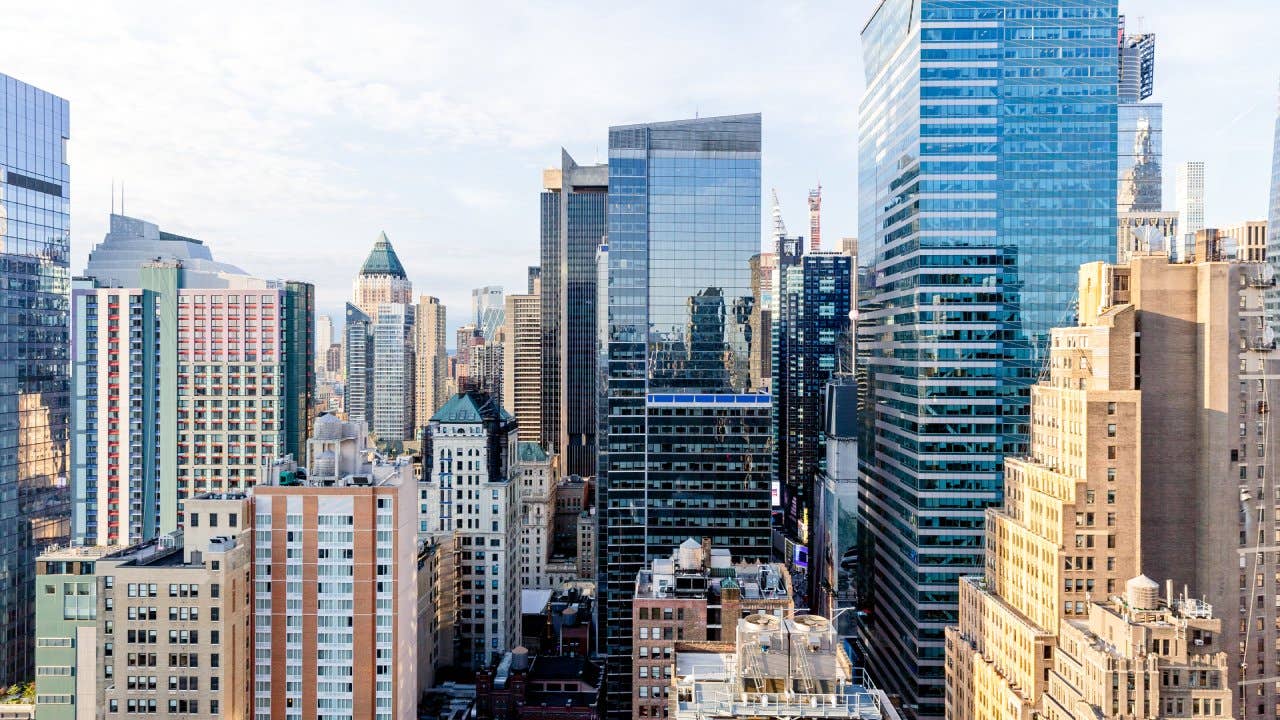Will your next home be a former office?

The Bankrate promise
At Bankrate we strive to help you make smarter financial decisions. While we adhere to strict , this post may contain references to products from our partners. Here's an explanation for .
When Erin Sykes stepped into the condominium tower at 15 Broad Street in Manhattan’s Financial District, she was smitten by the lobby’s elegant chandelier and the building’s high ceilings. Sykes bought a unit in the former office building, which was an early entrant to the trend of repurposing office space to residential units.
“It didn’t feel like a conversion,” Sykes says. “It felt like it was born this way.”
In recent years, developers have been converting more and more aging office buildings into residential space. Interest in the trend has picked up since the pandemic, which roiled the real estate market. The nationwide housing shortage has grown acute in recent years, while work-from-home trends have caused office vacancies to balloon, leaving many commercial buildings all but abandoned.
It’s no surprise, then, that Sykes — who is chief economist at Nest Seekers International, a real estate brokerage that operates in New York, New Jersey and Florida — thinks office-to-condo conversions address two challenges for the real estate market: “We have a shortage of housing, and an inundation of office space that’s not being used.”
Does that mean your next home will be in a former office building? Probably not. Transforming an office building into legal living quarters is not as simple a solution as it seems, and some cost-raising hurdles are already killing much of the momentum behind the concept.
Successful office-to-residential conversions
From 2010 through 2021, some 222 office buildings nationally were transformed into residential space, according to a study by University of North Carolina professor Emil Malizia. His report, produced for a commercial real estate development trade group, found that just 121 office buildings had been converted to residential in the previous six decades.
The cubicles-to-kitchens trend has taken hold in a number of cities, including Philadelphia, Cleveland, Los Angeles and Washington, D.C. While most of the office buildings that have been converted to residences are rental apartments, some are for-sale condos. In Chicago, the iconic Tribune Tower on Michigan Avenue was converted to luxury condos. In Silver Spring, Maryland, just outside of D.C., two old office buildings near a Metro station have been reconfigured as condos as well.
The 42-story former office tower at 15 Broad Street completed its transformation in 2007, just as the conversion trend was picking up. Once the headquarters of JP Morgan Bank, it now houses 382 luxury condo units and is known as Downtown by Philippe Starck, after the famed designer who oversaw its conversion.
One major advantage of office conversions: Because the floors in these buildings are typically concrete, residents endure less noise from neighbors than those in typical apartments. Sykes, for one, says her building is “a fortress.” Carmen Fontecilla, an agent at Compass in the D.C. area, gives a similar scouting report about the office-to-condo conversions in Silver Spring: “You don’t hear anything,” she says.
Challenges and drawbacks
At first glance, switching a building from unused offices to much-needed housing seems like a no-brainer. But real estate developers say there are many hurdles. “There’s a lot of nuance in executing an office-to-residential conversion,” says Caroline Flax Ganz, a vice president at real estate consulting firm RCLCO.
One obvious challenge is the cost of converting a commercial building to meet residential code. For example, modern office towers are typically designed with one set of bathrooms per floor at the interior of the building, near the elevators. But residential units require individual bathrooms and kitchens for each unit, which means developers must add extensive plumbing to make the building legally habitable.
Windows are another issue: Office-building windows typically don’t open, especially in skyscrapers. But most city codes require residences to have windows that can open in case of a fire.
Older office buildings tend to pose fewer construction challenges. They typically have windows that open and smaller floorplates, or footprints, which means less distance for water lines and air ducts to travel. The condo at 15 Broad Street, for example, was originally built as office space in the early 1900s.
Finally, while these buildings often carry desirable downtown addresses, they don’t necessarily have everything on buyers’ checklists. For instance, one of the Silver Spring condos has no dedicated parking — residents park on the street or forego cars altogether — and unit sizes of just 500 to 800 square feet.
Bottom line
With a glut of office space that’s no longer needed and a continued housing shortage, commercial-to-residential conversion seems like an obvious answer. But when you add up the cost and all the challenges, office conversions are likely to provide only a partial solution to the nation’s housing shortage, real estate experts say.
“We have to be realistic — this is not going to be a quick turn,” says Jamison Manwaring, CEO of Phoenix-based development firm Neighborhood Ventures. “There is a big demand to get these converted, but the costs are pretty high.”
Related Articles


Shopping for home insurance? Waiting until you move may cost you money

